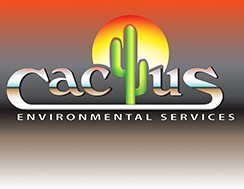
How to Safely Dispose of Asbestos
Image Credit: Adwo/ Shutterstock
How to Safely Dispose of Asbestos
Proper asbestos disposal is necessary for companies that manage construction debris, renovation waste, or environmental hazards. Failing to follow safe practices when handling asbestos can lead to serious health risks and legal consequences. Understanding how to dispose of asbestos correctly ensures the secure handling of asbestos waste, protects workers and the public, and supports regulatory compliance. Step-by-step procedures, safety protocols, and professional removal options are needed for any business aiming to achieve safe asbestos removal and maintain high standards of environmental responsibility.Health Risks Associated with Asbestos
Once valued for its heat resistance and durability, asbestos poses serious health risks when people inhale its airborne fibers. Conditions like lung cancer, mesothelioma, and asbestosis can develop over time, so taking preventive measures is recommended. Improper handling endangers workers and the public, underscoring the need for strict safety protocols and legal compliance. Understanding these risks helps companies prioritize safe and responsible asbestos management.Legal Requirements for Asbestos Disposal
Understanding the legal requirements for asbestos disposal helps ensure safety and prevent costly penalties. Local, state, and federal agencies designed regulations to minimize exposure to hazardous fibers and protect public health. The Environmental Protection Agency and the Occupational Safety and Health Administration provide key federal guidelines, focusing on safe handling during renovations and workplace protection. State and local laws may add further requirements, such as licensing and designated disposal sites. Compliance with these regulations reduces legal risk and reflects a company’s commitment to health and environmental responsibility. Regularly monitoring regulatory updates and consulting with licensed experts can help businesses navigate complex requirements. Proper training, documentation, and disposal practices are necessary to ensure full compliance. Companies contribute to a safer, healthier environment by prioritizing legal adherence,Steps for Safe Asbestos Disposal
Safe asbestos disposal demands careful planning, strict safety measures, and compliance with legal requirements at every stage. Each phase, from initial assessment to final disposal, plays a vital role in protecting people and the environment.1. Conduct an Asbestos Assessment
Start by identifying where asbestos is present in your facility. Certified inspectors can perform this task using air monitoring and bulk sampling techniques to pinpoint asbestos-containing materials. This assessment helps identify the exact location, type, and condition of asbestos, enabling targeted, safe, and compliant removal and disposal.2. Safety Precautions for Handling Asbestos
When dealing with asbestos, safety is paramount. Workers must wear personal protective equipment such as respirators, disposable coveralls, gloves, and goggles. Training in safe handling is a must, including methods like wetting materials to minimize dust and using sealed bags for containment, to prevent the release of hazardous asbestos fibers during removal, ensuring worker safety and regulatory compliance. Proper labeling of asbestos waste is vital to warn others of the hazard.3. Hiring Professional Asbestos Removal Services
Due to the complexities of asbestos removal, hiring qualified contractors is often the ideal choice. These experts have the necessary skills and equipment to manage asbestos safely and legally. When choosing a removal service, verify their certifications and check references to ensure they adhere to all safety and legal standards. This not only ensures safe disposal but also minimizes company liability.4. Transporting and Disposing of Asbestos Waste
Transporting asbestos waste requires careful handling to avoid contamination. Use sealed, labeled containers and licensed waste carriers familiar with asbestos regulations. Disposal should occur at approved sites that follow strict protocols to protect the environment and public health.Your Trusted Partner in Asbestos Waste Management
Safe asbestos disposal requires more than good intentions, strict adherence to safety protocols, and legal regulations. Companies that follow proper procedures help protect workers, the public, and the environment from the serious risks associated with asbestos exposure. While internal efforts are necessary, partnering with experienced and licensed experts can ensure the process is handled thoroughly and in full compliance. That’s why many businesses turn to Cactus Environmental Services. We are known for our proven expertise, commitment to safety, and deep understanding of regulatory requirements. For skilled support in managing asbestos waste, contact us at Cactus Environmental Services. Previous Post: What are the 4 Categories of Hazardous Waste?
Disclaimer: Cactus strives to provide top-tier service for all industrial and commercial markets. For individuals needing residential services, please contact your city's Household Hazardous Waste Division.

